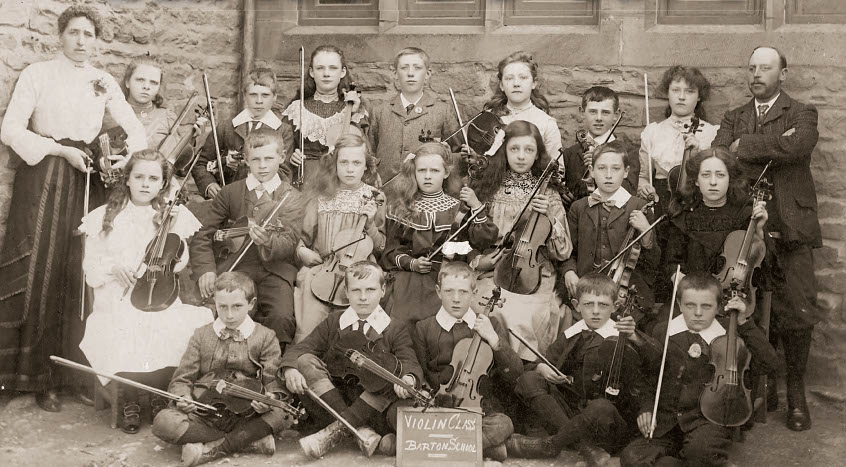Christina Bashford

Forgotten Voices, Hidden Pleasures: Violin Culture in Britain, c. 1870-1930
Late Victorian Britain was marked by what one contemporary described as a “perfect craze” for learning and playing the instruments of the violin family. This surge in musical activity, stimulated by the supply of newly affordable instruments in the 1870s, was underscored by changing social and cultural values that broke down longstanding barriers of gender and class, and was advanced by a growing commercial and educational infrastructure. It also endured, impacting both the British compositional tradition and multiple spheres of performance. By 1900, learning and playing the violin, viola, and cello—instruments with strong expressive potential and of great material beauty—had become normalized within patterns of classical and popular music-making. This state of affairs survived World War I to flourish through the 1920s, before declining in the early 1930s, when the impact of sound technology reduced interest in social music-making.
During her CAS appointment, Professor Bashford will work toward completing her book project, Forgotten Voices, Hidden Pleasures: Violin Culture in Britain, c.1870-1930, which rehabilitates this violin culture through a broad historical analysis of the practical and conceptual impact of the violin family in the UK. Over the last century, the diverse activities of the culture’s players and enthusiasts—among them middle-class women, working-class men, and state-school children—have been silenced or forgotten by the historical record, even though the culture’s legacies have reverberated into the present. As well as making music for pleasure, many of the players operated in the less glamorous, poorly-paid sectors of the music profession. They were complemented by a swathe of hobbyist instrument makers and collectors who have also been ignored. Recovering all these people’s voices, pleasures, and contributions is essential to understanding how and why the violin family impacted British culture and society so profoundly during this era.
